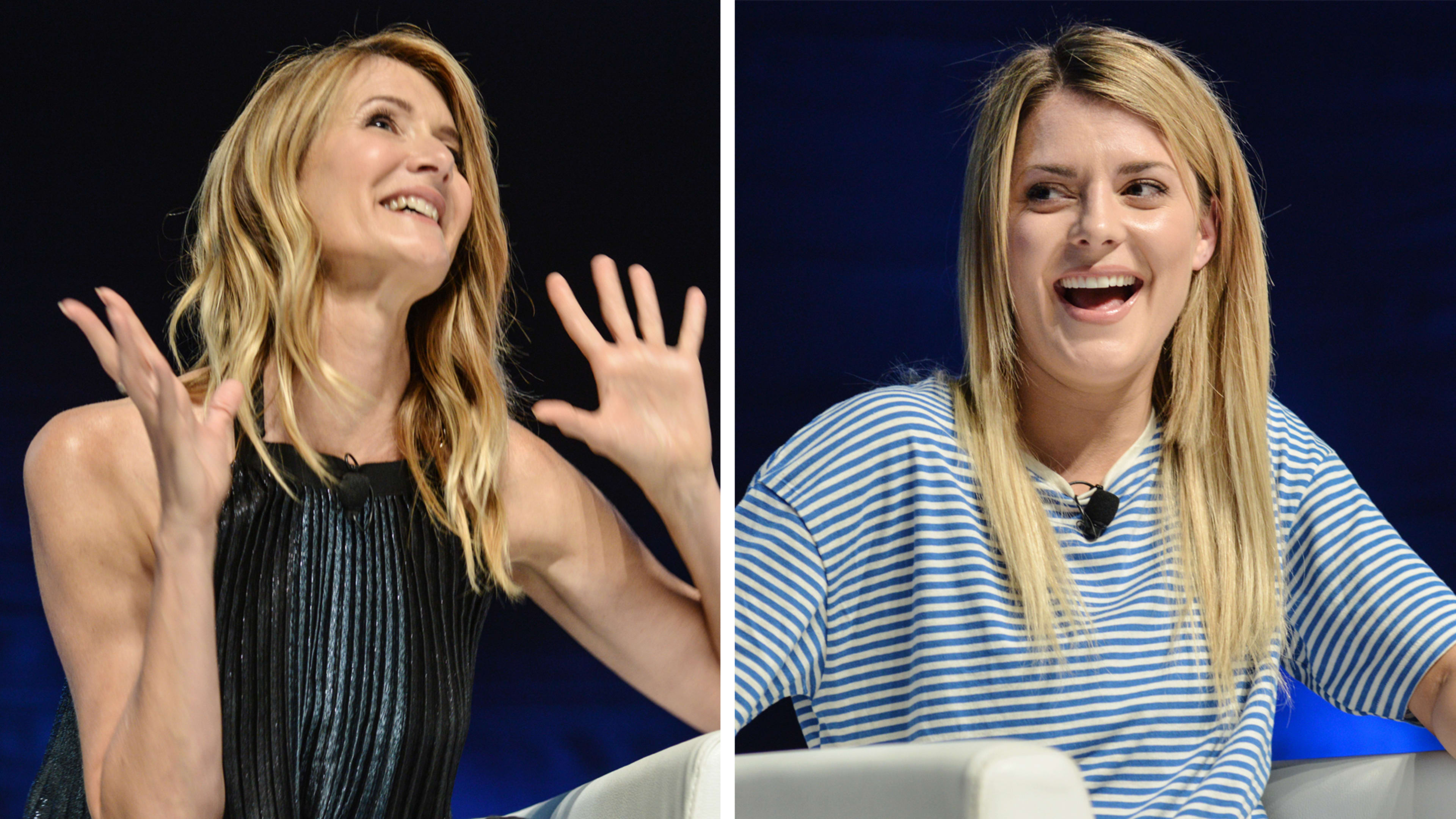The Cannes Lions panel on Sunday, featuring actor Laura Dern and new media hyphenate Grace Helbi,g was billed as a bit of a duel between Classic Hollywood and the YouTube Generation. But there certainly was no sense of competition on stage. More like mutual respect and an acknowledgement that both are moving towards an as-yet-undefined center in entertainment, where the brands and marketers in the festival audience will certainly play a role.
It all started with a video montage that played up their differences, introduced by panel moderator Marcus Peterzell, partner and executive vice-president of entertainment at Ketchum. Starting with a frenetic collection of Helbig’s YouTube content, then a slowed down stroll through Dern’s IMDB page, with clips from some of her memorable performances in films like Jurassic Park, Wild, and TV shows like HBO’s Enlightened and Big Little Lies (ending on a still shot of her in costume for Star Wars VIII: The Last Jedi).
Answering a question about growing up in Hollywood, Dern said back then part of the brand was the mystique of the actor. “You did maybe one magazine cover and the Johnny Carson Show, and that was it,” said Dern. “There was no branding. And if someone considered you in the world of advertising, which was rare, but they saw it in the 40s and 50s, but the new generation of actor in the 70s, it was about being unreachable or untouchable. So it was the thing you didn’t do. And obviously that’s changed completely now.”
In contrast to growing up in Hollywood, Helbig began her YouTube career as a way to be creative amid challenges breaking into traditional TV. Now at more than 3 million subscribers, she is using that popularity to break into film and TV on her own terms. That also goes for working with brands.
https://twitter.com/jowrotethis/status/867349526092292096
“As a creator, you start to realize the connection to your audience is very transparent, intimate and there are opportunities to create revenue streams working with brands, but we’re very mindful of the brands we work with and the kind of content we create with them,” said Helbig. “If it’s a product I genuinely enjoy, then there’s a lot of room to talk to my audience about that.”
She went on to talk about one of her first brand opportunities, with St. Ive’s. “When they came to me with this new spray lotion they had, I said directly ‘Can I make the dumbest lotion commercial possible?’ And they said, ‘Mmm, Ok.’ and the audience feedback was so great because it was so transparent, it wasn’t hidden,” said Helbig. “I was making a dumb commercial for a lotion I genuinely like and it worked out really well. There are more opportunities to get more creative with brands, which gets creators like me very excited.”
When asked if a commercial client had ever not approved her work, or handed back copious amounts of notes, Helbig essentially rolled her eyes. “I’ve delivered work to clients and they’ve given notes back that don’t make much sense to me,” she said. Her most recent brand work rolled out last week for Wendy’s. “I understand the idea of giving notes to feel like you’re participating in your career, but sometimes the best note you can give a content creator is, ‘Great job, no notes! If you’re happy with this, we’re happy with this.’ Our audience is only pays us in attention, so our relationship is so delicate, and there is a trust there that means we know what our audience will respond to. It also means there is a lot at stake for content creators working with brands. Brands should know and trust the creator, and really research them, not just go for the numbers. They should know the tone, the audience, and who they’re working with, otherwise it probably won’t be a great fit.”
Dern has one of her first commercial projects coming out soon, but wouldn’t talk about it just yet. Beyond brands, she did talk about how inspirational creators like Helbig are, and how that influence is increasingly rubbing off on traditional Hollywood. “On the film side, it’s about figuring how we now have the thing, instead of waiting for someone to finance you, there is this other world where you can create your own content,” said Dern, using David Lynch’s 2006 film Inland Empire as a prime example. “He wanted to explore without the pressure of anything but his own money. And this was pre-RED digital cameras, so he just used a Sony camcorder and started shooting. And I asked him why he wanted to do it like this, and he said my goal is that any 16-year-old should be able to pick up his camera and make a movie, so why can’t we?”
Recognize your brand’s excellence by applying to this year’s Brands That Matter Awards before the early-rate deadline, May 3.
